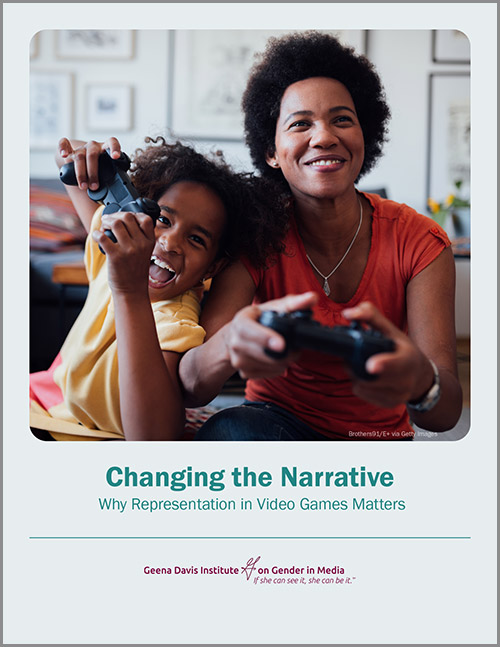As a research-focused organization with a mission to use data and insights to encourage broader representation in media, we understand the far-reaching effects that media has on our social, cultural, and individual values and perspectives – and this includes video games. Video games are an important cultural touchstone that also influences other forms of entertainment, and like other media, they play an important role in socialization. For this reason, we present a following literature review on the importance of representation in video games. With this, we have crafted a list of opportunities for creators to ensure their video games reach gamers from marginalized and often underrepresented communities.
Key Findings
- Women make up just under half of gamers across global markets (46% of American gamers, 47% of European gamers, 48% of Australian gamers, and 37% of Asian gamers).
- Over 70% of respondents agree it is extremely important or very important that games feature diverse characters (70%) and stories (73%).
- Women and nonbinary people, people of color, and disabled people are often underrepresented in popular video games.
- Women are hypersexualized in video games (25% shown in revealing clothing and 12% shown in some state of nudity), and much more so than men (2% shown in revealing clothing and 3% shown in some state of nudity).
Recommendations
The insights in this paper shine light on opportunities for game developers and designers to broaden representation and diversify the portrayals of marginalized communities in video games. For creatives, these opportunities will help prevent the reproduction of real-world cultural stereotypes when creating new fictionalized cultures.
- Hire Balanced Developer Teams. Inclusive content and authentic representation STARTS with diverse development teams that can speak to the nuances of identity plus supportive leadership and a company culture that encourages speaking up.
- Diversify across Character Types. Make deliberate choices about character identities, and follow through with authenticity. Consider how the sum of different characters (POV, NPC) will impact the player’s overall experience of the game.
- Create Multidimensional Characters
- Pay attention to accents, affectations and cadences; these are tools to help build diversity but require cultural sensitivity.
- Remember that neutrality isn’t neutral even in nonhuman characters.
- Apply an intersectional lens to character development and craft complex personalities, rather than a singular, defining trait.
- Recognize How Characters’ Identities Intersect with World-Building
- Be cognizant of how a character’s race and gender shapes their experience in their world for more authentic storytelling.
- Intentionally explore complex themes, cultural nuances, and social commentary relevant to the game’s world.
- Incorporate Gameplay Mechanics That Actively Challenge Rigid Masculinity
- Reward gameplay that is nonviolent, such as creativity and cunning. Design games that encourage cooperation and empathy.
- Challenge assumptions about gender coded skills and stereotypical behaviors.
- Incorporate Gameplay Mechanics That Actively Challenge Identity-Based Stereotypes
- Challenge identity-based stereotypes with peripheral NPC’s interactions with the playable character.
- Surprise people with the character’s abilities, especially NPCs, who can be written as if they are the heroes of their own journeys.
- Eliminate Sexualized Violence
- Question the necessity of reinforcing or rewarding domination of female characters.
- Enhance players’ connections with the experiences of female characters in ways that do not rely on her physical appearance or sexuality.
- Eliminate opportunities for sexual violation of female characters.
- Broaden Characters’ Body Types to Tell New Stories
- Pair unexpected body types and personality traits to help players unlearn stereotypes.
- Remember that body diversity isn’t about just body size but also gendered self-presentation. Include fluid, nonbinary options for avatars.
- Hire Balanced Developer Teams. Inclusive content and authentic representation STARTS with diverse development teams that can speak to the nuances of identity plus supportive leadership and a company culture that encourages speaking up.
Photo credit: Brothers91/E+ via Getty Images

